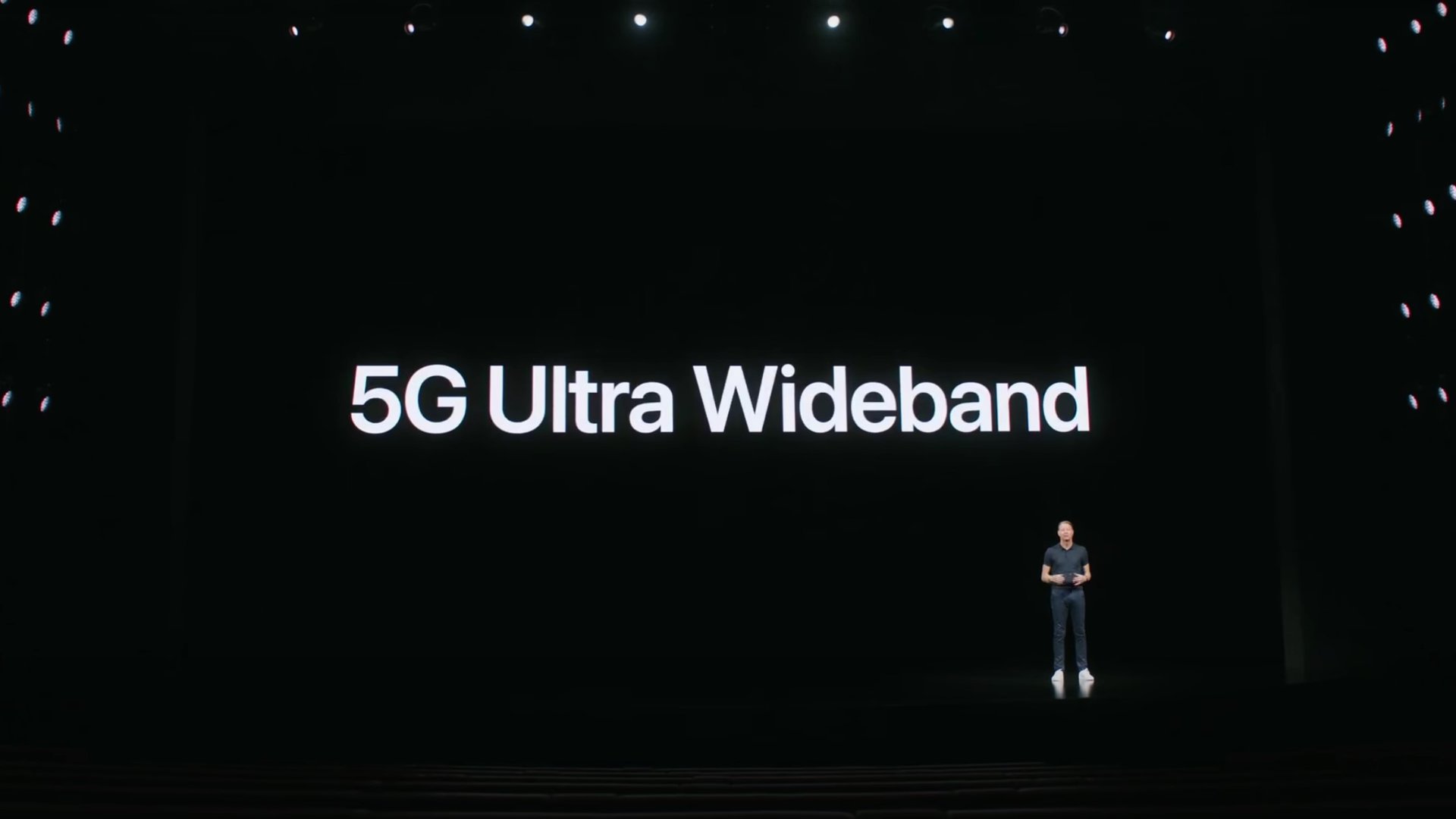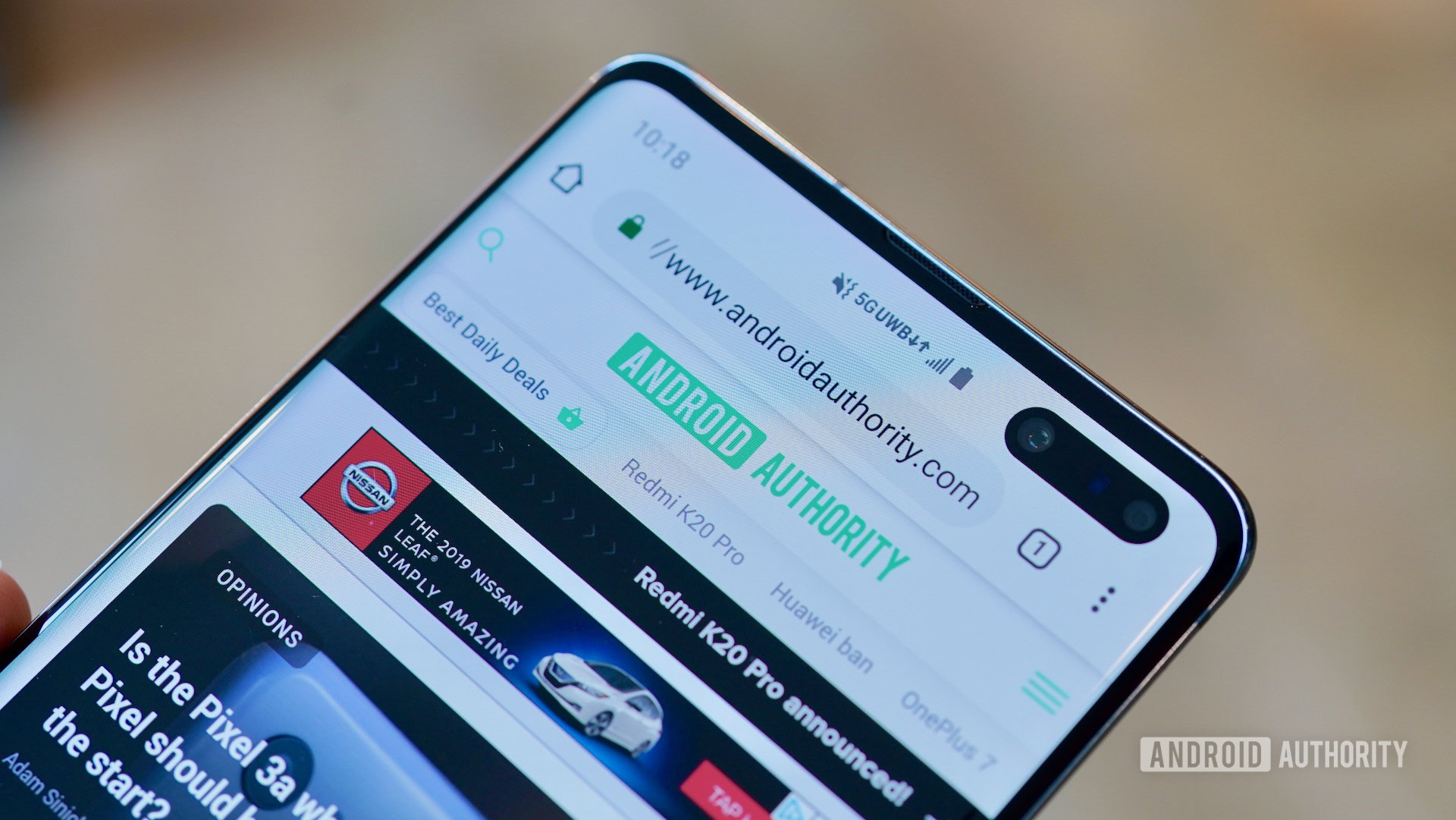Affiliate links on Android Authority may earn us a commission. Learn more.
What does 5G UW mean? Is it better than regular 5G?

Mobile networks can be a confusing mess, especially if your phone often cycles between various generations like 4G, LTE, and 5G. If that wasn’t enough, all of the top American mobile carriers have also started throwing around terms like 5G UW and 5G UC. You may notice these terms show up in your phone’s status bar instead of the regular 5G logo. But how much of a difference does 5G UW make in the real world? Here’s everything you need to know.
Verizon’s 5G UW or UWB is short for Ultra Wideband. The term refers to the company’s fastest mobile networks. You will see improved 5G UW coverage as Verizon upgrades its infrastructure across the country over time. Keep reading to learn more about the differences between Verizon’s regular 5G networks and 5G UW.
What does 5G UW mean?

Verizon uses the 5G UW shorthand for its 5G Ultra Wideband networks (pictured above). These networks are significantly faster than standard 5G deployments and have become more common in recent times.
Verizon’s 5G UW is sometimes also denoted by the term UWB, but don’t confuse it with ultra-wideband wireless tech, which has nothing to do with mobile networks. Instead, ultra-wideband (or UWB) is the communication protocol that allows precision tracking on devices like the Apple AirTag.
What is 5G Ultra Wideband?
The 5G spectrum is spread across three “bands”, namely low-band, mid-band, and mmWave. The lowest frequency band, appropriately called low-band, is not much different from modern LTE networks in terms of speed. However, it’s perfect for covering a large area without deploying dozens of towers.
At the other end of the spectrum, high-frequency mmWave 5G networks can deliver blistering fast speeds but fall short in terms of coverage. Mid-band (also known as C-band) lies in the middle. It straddles the line between slightly worse coverage while also delivering markedly better speeds than 4G.
The 5G UW logo indicates your phone is connected to one of Verizon's faster networks.
Verizon initially used the 5G UW branding for its flagship mmWave 5G networks that could comfortably reach download speeds of one gigabit per second. In 2021, however, the company spent over $40 billion to secure mid-band licenses and committed to bringing those frequencies under its 5G Ultra Wideband umbrella. Fast forward to today and that transition has taken place in most major urban centers.
Long story short: If you see the 5G UW symbol on your phone, it means that you’re connected to Verizon’s C-band or mmWave networks. The regular 5G symbol indicates a connection to Verizon’s 5G Nationwide or slower low-band networks.
5G vs 5G UW vs 5G UC: How do they compare?
| Verizon | At&t | T-Mobile | |
|---|---|---|---|
Low-band | Verizon 5G Nationwide | At&t 5G | T-Mobile 5G XR (Extended Range) |
Mid-band & mmWave | Verizon 5G UW or UWB | At&t 5G Plus | T-Mobile 5G UC (Ultra Capacity) |
As you can see in the above table, all US carriers have put their own marketing spin on various flavors of 5G. So depending on your carrier of choice, you could see one of a half-dozen different logos in your phone’s status bar. T-Mobile, for example, uses the 5G UC or Ultra Capacity branding to denote the same networks as Verizon’s 5G UW. Likewise, AT&T’s 5G+ networks also offer C-band and mmWave connectivity.
Compared to standard 5G, Verizon’s UW and T-Mobile’s UC will deliver equally fast 5G download speeds in the real world. The exact speed will depend on whether you’re connected to a C-band or mmWave tower. Generally speaking, only the largest cities will have any kind of mmWave 5G coverage since these high frequencies can only cover one or two blocks. Moreover, mmWave signals can be blocked by trees and walls, leading to increased battery drain on 5G and many other 5G problems.
5G UW and UC are carrier-specific terms that indicate higher-quality connections.
It’s also worth mentioning that not all 5G phones can handle the fastest networks. Unlocked versions of budget smartphones like the Pixel 8a and Galaxy A54 5G don’t support mmWave 5G. These smartphones will connect to Verizon’s C-band networks instead, while still displaying the 5G UW logo. If gigabit speeds matter to you, you can typically pay a small amount extra for carrier-branded phones. For example, Verizon sells the mmWave-equipped Pixel 8a for an extra $50.
If you’re not too concerned about getting the fastest speeds, don’t worry about losing out on mmWave connectivity. Verizon’s C-band 5G is likely enough for most people. Not to mention, you probably won’t find mmWave towers outside of populated hotspots anyway.
FAQs
The 5G UW logo indicates you’re connected to one of Verizon’s fastest networks. However, these signals can’t pass through obstacles as easily as standard 5G and LTE.
You cannot turn off 5G UW specifically, but you can force your smartphone to use 4G or LTE instead.
5G UW is faster than 4G and standard 5G (which Verizon refers to as 5G Nationwide). You can expect download speeds in the hundreds of megabits per second range when connected to a 5G UW network.
No, 5G UW and UC refer to the same kind of mobile networks, except that the two terms are used by Verizon and T-Mobile respectively.